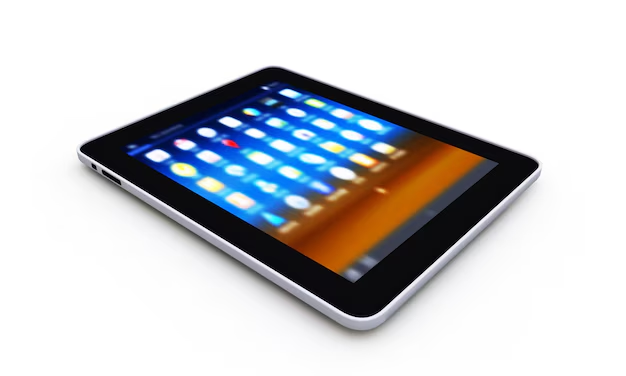
Tablets powered by Android have become increasingly popular thanks to their flexibility, wide app ecosystem, and compatibility with accessories. With the release of Android 16-powered tablets, users now have access to faster performance, smarter multitasking, and longer-lasting software support. Whether you need a device for productivity, learning, entertainment, or travel, there is likely an Android 16 tablet that matches your needs.
This guide will help you understand the most important features, compare different tablet types, and decide which one is right for you.
Devices | Features | Price |
|---|---|---|
Android 16 Tablets | WiFi Android Tablets | |
Tab Android Tablet | WiFi Android Tablets |
What to Consider Before Buying an Android 16 Tablet
When shopping for an Android 16 tablet, your decision should go beyond just screen size and price. Here are the most critical factors:
1. Screen Size and Display Quality
- Compact (8–10 inches): Lightweight and portable, best for reading, streaming, or kids.
- Mid-Range (10–12 inches): Balanced between productivity and entertainment. Great for students.
- Large (12–14 inches): Ideal for professionals, artists, and multitasking.
Look for:
- Resolution: Full HD or higher ensures sharp visuals.
- Brightness: High brightness helps with outdoor use.
- Refresh rate: A smoother 90Hz or 120Hz refresh rate is better for gaming and creative tasks.
2. Performance (Processor & RAM)
Performance determines how smoothly your tablet runs apps and multitasks.
- Basic Performance (4GB RAM, entry-level processors): Browsing, eBooks, video calls.
- Mid-Tier (6–8GB RAM): Smooth multitasking, gaming, online classes, office apps.
- High-End (12GB+ RAM): Perfect for professional editing, 3D modeling, or multitasking with multiple apps.
3. Storage Options
- 64GB–128GB: Great for light use.
- 256GB–512GB: Good balance for apps, movies, and work documents.
- 1TB or expandable storage: For professionals storing large files.
4. Battery Life
A typical Android 16 tablet should offer 10–14 hours of mixed use. Heavy users should look for models that support fast charging to minimize downtime.
5. Software and Updates
Android 16 offers improved multitasking, enhanced privacy features, and better support for large-screen apps. Check if the tablet guarantees several years of security and OS updates for long-term usability.
6. Connectivity and Accessories
- Wi-Fi vs. 5G: Wi-Fi models are perfect for home and office. 5G options suit frequent travelers.
- Stylus & Keyboard Support: Important for professionals, students, or creative users.
- Ports & Expansion: USB-C ports and SD card slots enhance usability.
Android 16 Tablet Comparison Summary
Here’s a breakdown of the different types of Android 16 tablets:
| Tablet Type | Screen Size | Best For | Pros | Cons |
|---|---|---|---|---|
| Compact (8–10″) | Small, light | Kids, travelers, casual users | Highly portable, affordable | Limited multitasking space |
| Mid-Range (10–12″) | Medium | Students, everyday use | Balanced performance, versatile | Not as powerful as larger models |
| Large (12–14″) | Big display | Professionals, creatives | Laptop replacement, great multitasking | Heavier, pricier, less travel-friendly |
Pros & Cons of Android 16 Tablets
Pros
- Customizable: Flexible software and wide app availability.
- Variety: Options for every budget and use case.
- Multitasking: Enhanced split-screen and productivity features.
- Expandable storage: Many models support microSD cards.
- Longer support: Android 16 extends update cycles for many tablets.
Cons
- Fragmentation: Some tablets may not receive updates as quickly.
- Accessory compatibility: Stylus and keyboard quality varies by model.
- Learning curve: Can feel more complex than other platforms for beginners.
Who Each Tablet Type Is Best For
- Students: Mid-size tablets with stylus and keyboard support are perfect for note-taking, attending online classes, and light editing.
- Professionals: Large-screen models with high RAM are great for multitasking, video calls, and presentations.
- Artists and Creatives: Look for large displays with stylus support and higher refresh rates.
- Travelers: Compact models with strong battery life and cellular connectivity are best for portability.
- Families and Kids: Durable, affordable tablets are great for streaming, reading, and educational apps.
- Gamers: Mid to high-performance tablets with advanced processors and cooling features provide smooth gameplay.
FAQs About Android 16 Tablets
Q1: Is Android 16 worth upgrading to?
Yes. Android 16 introduces improved multitasking, better security features, and enhanced app scaling for larger screens—making tablets more efficient and long-lasting.
Q2: Can an Android 16 tablet replace a laptop?
For casual users, students, and even professionals who rely on office apps, cloud services, and creative tools, yes. Adding a detachable keyboard and stylus can make a tablet function like a lightweight laptop. However, for heavy coding, high-end editing, or 3D rendering, a laptop is still superior.
Q3: How much storage do I need?
If you mainly use cloud storage, 128GB may be enough. For offline movies, games, or large creative projects, 256GB or more is recommended.
Q4: Do Android 16 tablets support gaming?
Yes, many Android 16 tablets are optimized for gaming with high-refresh displays, powerful processors, and improved cooling.
Q5: What’s the difference between Wi-Fi and cellular models?
Wi-Fi models are best if you primarily use your tablet at home or school. Cellular (4G/5G) models are better for frequent travelers who need reliable connectivity on the go.
Final Recommendation
Choosing the right Android 16 tablet comes down to your needs, budget, and lifestyle.
- For casual users and families: A compact or mid-size model offers great value and portability.
- For students: A mid-size tablet with stylus and keyboard support balances productivity with affordability.
- For professionals and creatives: A large-screen tablet with high performance, expandable storage, and stylus support can serve as a true laptop replacement.
- For gamers: Look for models with high refresh rates and strong processors to ensure smooth performance.
By focusing on display quality, performance, battery life, and accessories, you can invest in an Android 16 tablet that will remain reliable for years to come.
